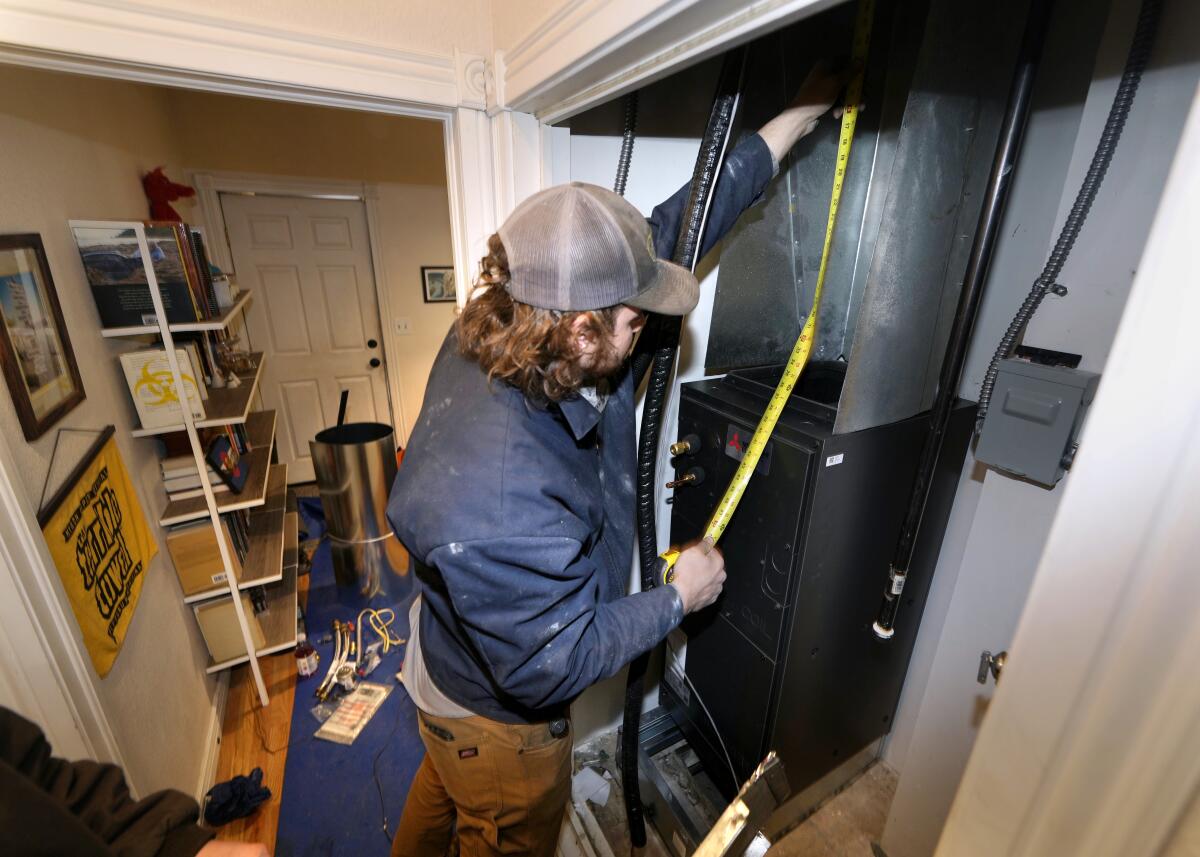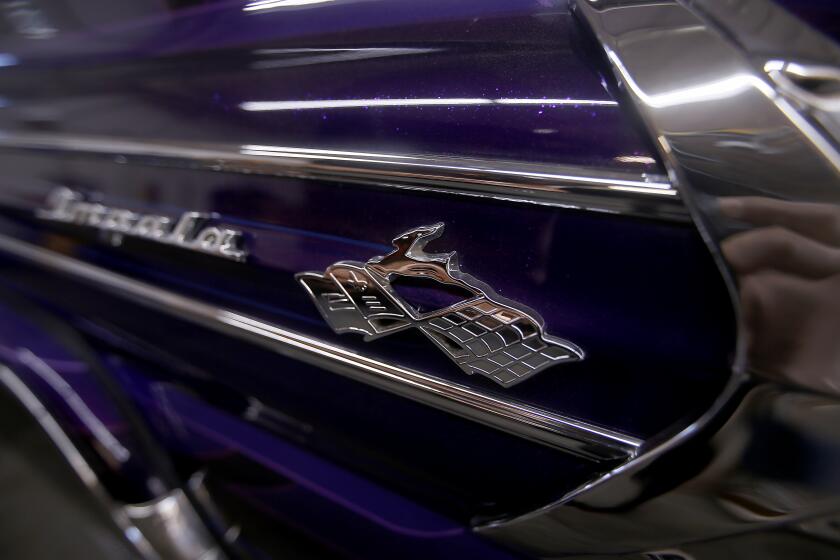Editorial: Bay Area making climate change history by phasing out sales of gas furnaces and water heaters

As soon as this month, air quality officials in the San Francisco Bay Area are expected to adopt the nation’s first rules phasing out new gas-fueled water heaters and furnaces in homes and businesses starting in 2027. When they do, it will mark a significant step in the effort to curb health-damaging and planet-warming emissions from buildings.
The California Air Resources Board adopted plans last year to phase out sales of gas water heaters and furnaces statewide by 2030 but isn’t going to consider setting rules to do so until 2025. The South Coast Air Quality Management District, which regulates emissions across much of Southern California, is also years behind. Once again, the Bay Area leads the state on environmental innovation.
The Bay Area Air Quality Management District is set to vote on March 15 on rules that, starting in 2027, will phase in requirements that only zero-emission water heaters and furnaces be sold and installed in homes and buildings. The rules don’t apply to other appliances such as gas stoves or clothes dryers, which release far less pollution than water heaters and furnaces.
Many cities in California, including Los Angeles, have banned new gas hookups, but these are the first rules that would effectively ban the sale of gas appliances. Ending the burning of fossil fuels in homes and businesses isn’t just good for the health of residents, it’s necessary to fight climate change and air pollution and should be replicated across the nation.
California rules should responsibly phase out chromium-6 so chrome platers aren’t allowed to dump the cancer-causing chemical into neighborhoods.
People may not think of homes and other buildings as big polluters, but in California, they are filled with appliances such as dryers, stoves, furnaces and water heaters that are overwhelmingly fueled by natural gas. Collectively they generate four times as much smog-forming pollution as the state’s gas power plants. The Bay Area’s gas water heater and furnace phaseout is expected to slash more than 3,000 tons of nitrogen oxide emissions each year and prevent 85 early deaths, thousands of asthma attacks and lost school and work days annually, with the greatest benefits going to communities of color that are hardest hit by air pollution.
But there are serious barriers and equity concerns around building electrification, and elected officials in the Bay Area, Southern California and other parts of the state will have to work hard to address them to make the transition a success. It will be no easy task, arguably more difficult, even, than the state’s efforts to replace gas-powered vehicles with electric ones.
The biggest obstacle is up-front cost. Electric appliances are still more expensive than gas ones. Putting in a new heat pump costs an average of $2,900 more than a gas furnace, and a heat-pump water heater costs about $850 more than a gas one, according to the Bay Area air district. But they could be offset by cost savings, including reduced utility bills and tax credits, rebates and other federal climate incentives that are becoming available under the federal Inflation Reduction Act, as well as state programs aimed at low-income residents. An analysis by SPUR, a nonprofit public policy organization, found that low-income single-family households could actually save $8,000 in up-front costs replacing gas furnaces and water heaters with heat pumps if they take advantage of existing state and federal subsidies.
Legislation proposed by Gov. Gavin Newsom’s administration offers a promising path forward for the imperiled Joshua tree, whose future is in doubt.
Businesses, manufacturers and the construction industry have asked for delays and other changes to the rules and question whether the phaseout is feasible because of limited availability of heat pumps and wiring and air flow requirements that complicate installations in older homes. Those are certainly valid concerns, but that’s why the proposal includes years of lead time before it begins taking effect. The rules will send an important signal to manufacturers and contractors that there will be a demand, while giving them time to build capacity. The cost for heat pumps and should decrease over time.
Appliance electrification poses extra challenges because they are often emergency purchases — things you don’t think about until they break and need to be replaced immediately. And it’s not always as simple as just swapping out your current equipment with an electric version. Your home may require electrical panel upgrades, new 240-volt outlets or other modifications that can be pricey and can’t be done overnight.
There are promising changes underway, including devices that can allow for the installation of electric heating appliances without having to upgrade your electrical panel and heat-pump water heater models that can be plugged into standard 120-volt outlets. But those are not yet widely available. Too many contractors remain unfamiliar or reluctant to install heat pumps, and it will take training and education as well as financial incentives to move them in that direction.
Change won’t happen overnight, because these appliances can last for 20 years or more, and it will take decades for the region’s 1.8 million households across nine Bay Area counties that currently use gas-fueled appliances to switch them out. But it’s coming. This is only the beginning.
More to Read
A cure for the common opinion
Get thought-provoking perspectives with our weekly newsletter.
You may occasionally receive promotional content from the Los Angeles Times.












